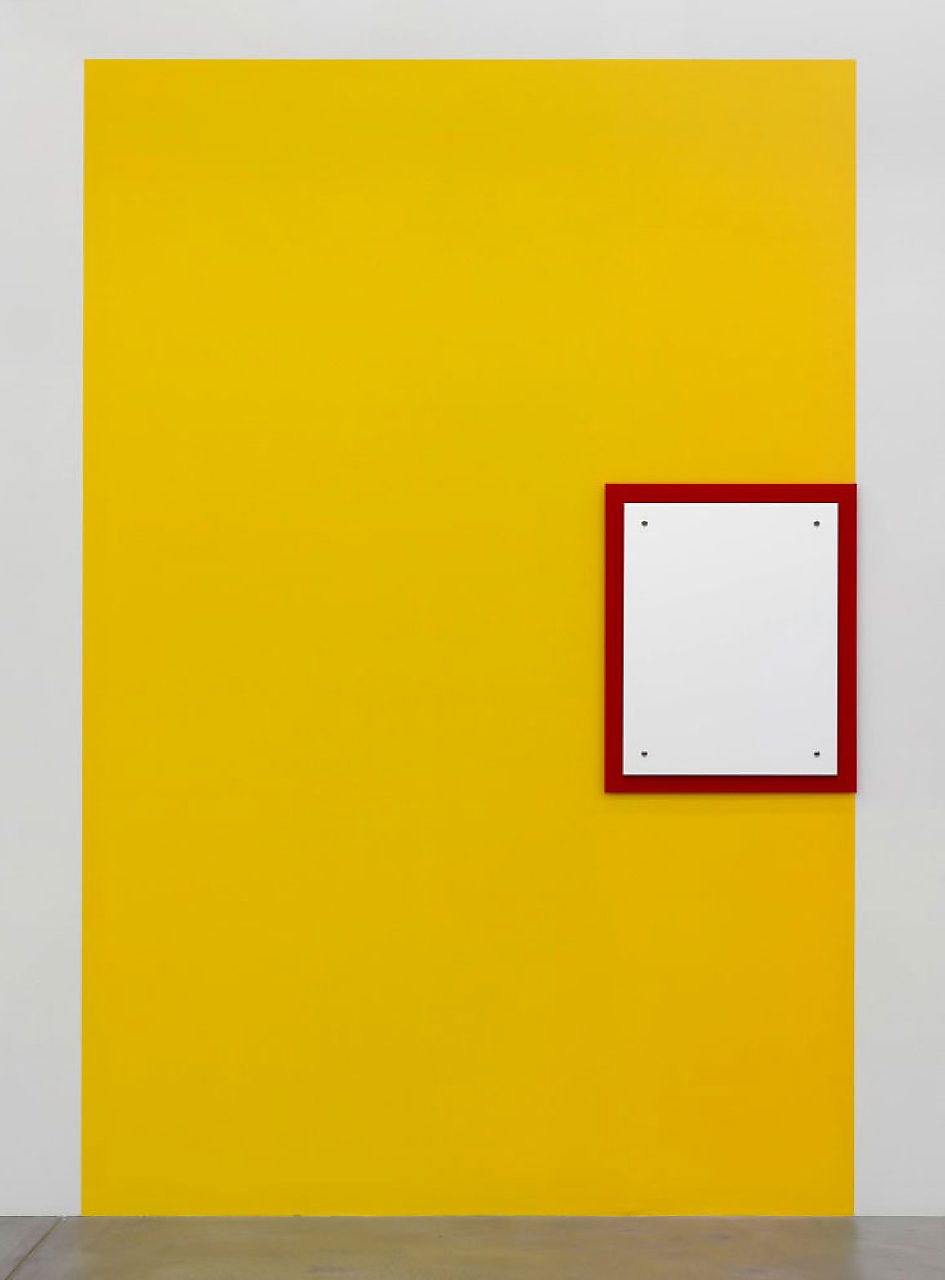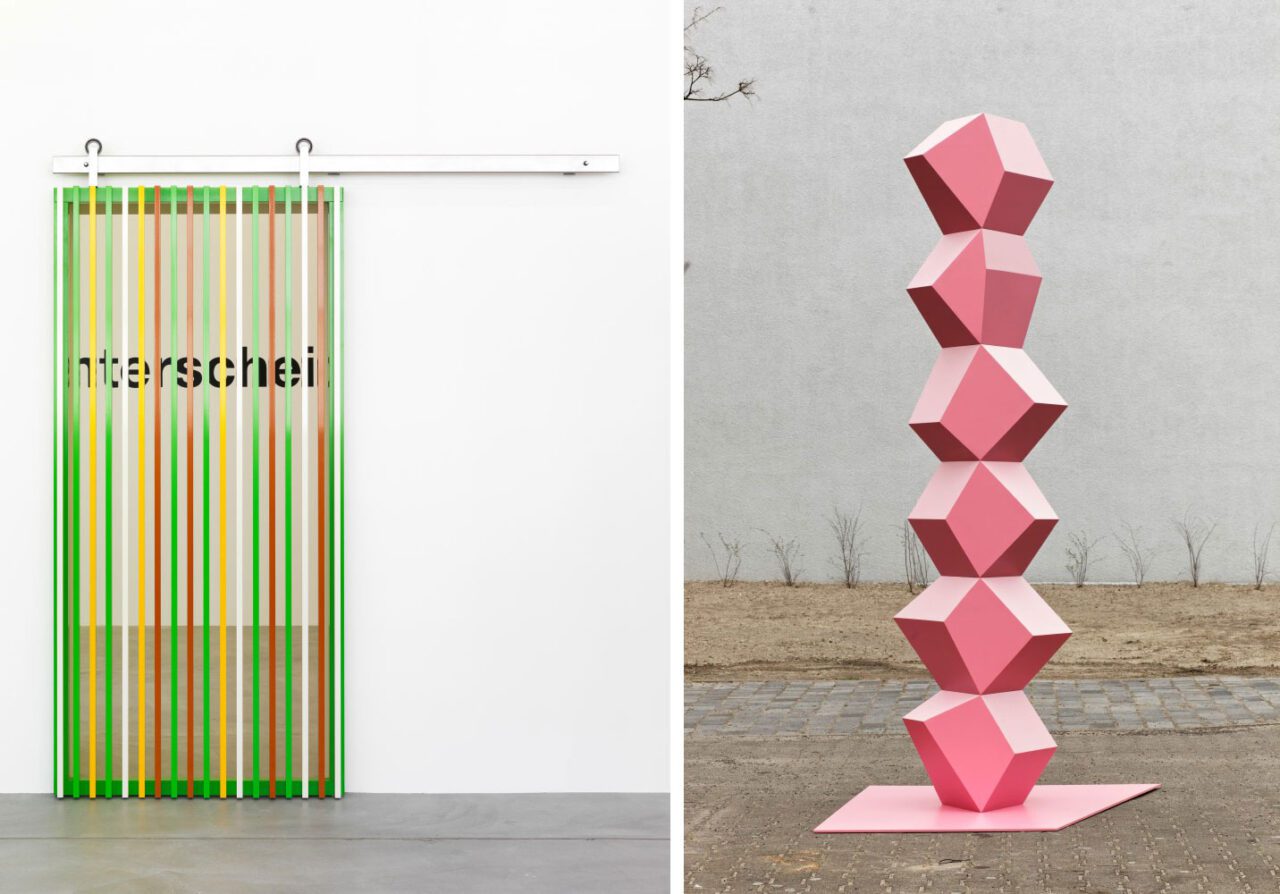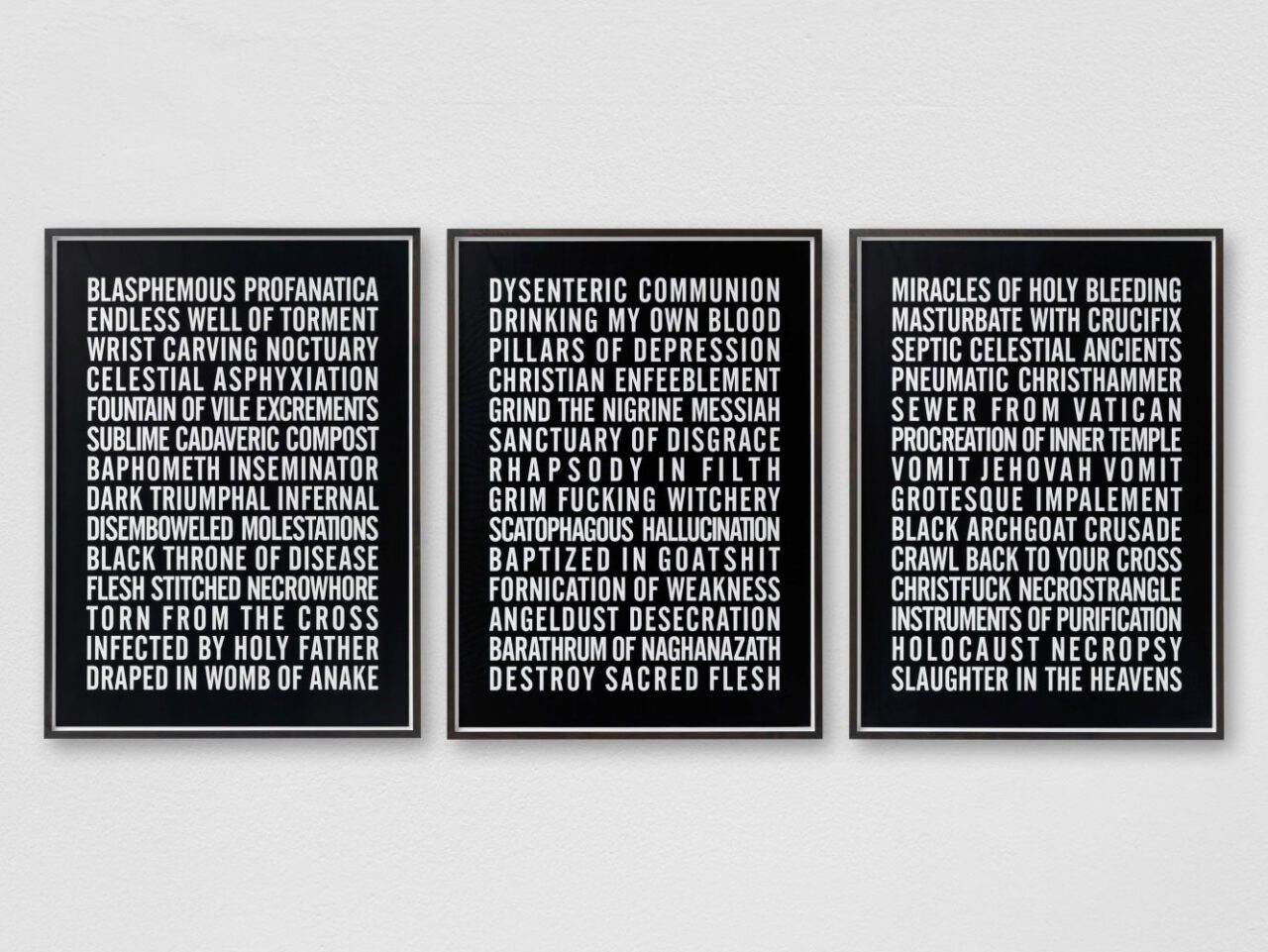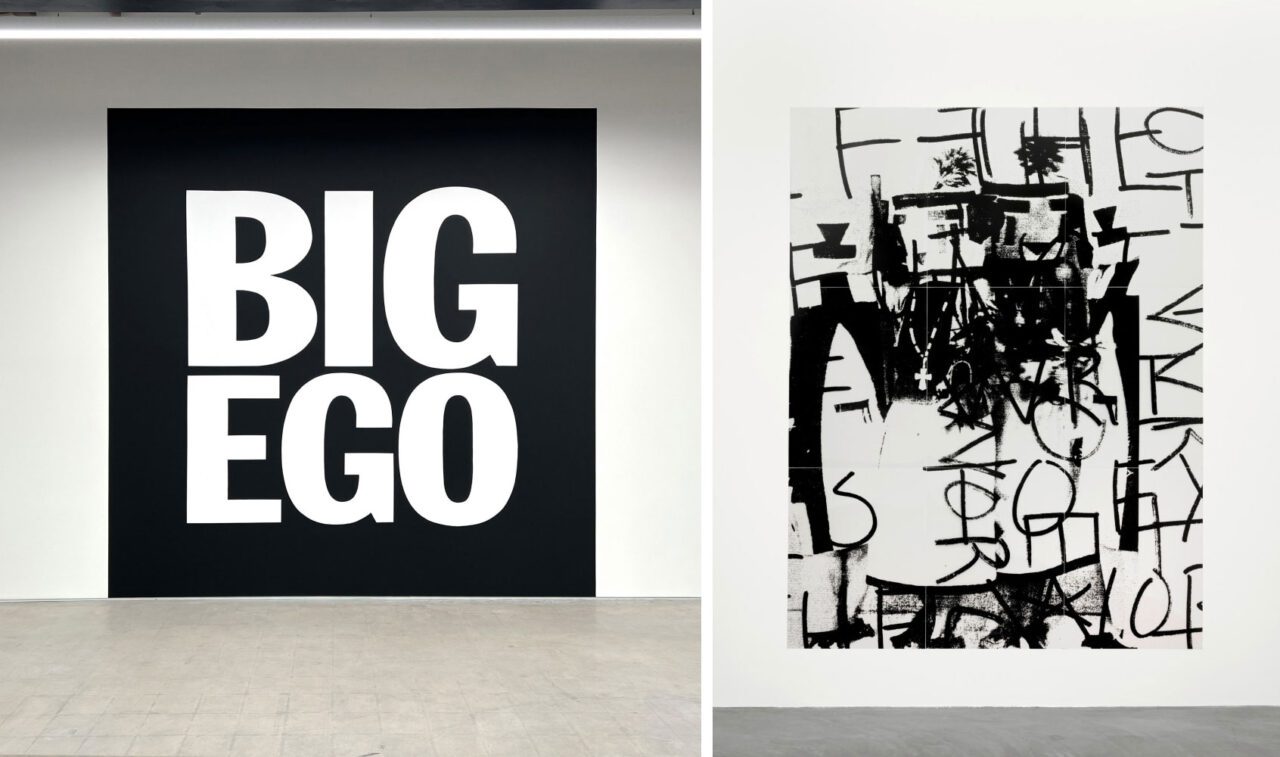PREVIEW:Wall Works & Sculptures
Against the historical background of mural paintings and wall designs dating back over millennia, artists in the 20th and 21st century devised concepts for wall paintings, picture walls and wall reliefs, which went beyond the frame of an individual image in order to take an entire wall or interior space into view. The boundaries of painting and sculpture have been further advanced through their connection to this notion since the 1960s, while also questioning the conditions under which art is produced, how it presents itself, and how it is reviewed and traded.
By Efi Michalarou
Photo: Galerie Eva Presenhuber Archive

The group exhibition “Wall Works & Sculptures”, showcases works by various artists. Walead Beshty is concerned with how the art system influences the production of art and how the works that emerge from it can in turn influence it. His work is based on an awareness of the interactions between social context and social conditions: Materials, production conditions, studio and exhibition spaces, transport systems, educational institutions and environments, critics, audiences, collectors, the art market, etc. They help to determine how a work of art is created, presented and ultimately perceived. Beshty understands the art system as a microsystem of globalised capitalist society, characterised by the exchange of information and the necessary mechanisms of circulation and distribution. Angela Bulloch’s work manifests a fascination with systems, patterns and rules, as well as a preoccupation with the history of form and human interaction. Bulloch consistently blurs the boundaries between the perceived digital and the analogue, between virtuality and reality. Her sculptures and installations combine her interest in the logic of geometry and seriality with a graphic quality. The stack on display seems almost like an animated illusion in a digital space. The irregular angles in the repeated rhomboid form confuse the eye and destroy the brain’s expectation of regular geometric forms. The appearance of the sculpture changes depending on the point of view: from one side the irregular aspect dominates, from another the impression of a certain totemic regularity prevails. Sylvie Fleury is best known for her ready-mades, videos, site-specific installations and murals, which hold up a mirror to the brand fetishism of Western consumer society with its thirst for luxury goods and glamour. The commodification of beauty and wellness is rendered in slick, highly produced objects d’art, with human-scale make-up palettes and neon signs expressing state-of-the-art aphorisms appropriated from perfume brands. Fleury’s work is less about overtly critiquing consumerism than it is about how the world of fashion and cosmetics, despite being so elusive, seems to make promises and evoke desire and how easily we are seduced. Liam Gillick is known for work that deploys multiple forms to expose the new political control systems that emerged at the beginning of the 1990s. Gillick’s work exposes the dysfunctional aspects of a modernist legacy in terms of abstraction and architecture when framed within a globalized, neo-liberal consensus. His work extends into structural rethinking of the exhibition as a form. Over the last twenty-five years Gillick has also been a prolific writer and critic of contemporary art. Throughout this time Gillick has extended his practice into experimental venues and collaborative projects with artists including Philippe Parreno, Lawrence Weiner, Louise Lawler, and the band New Order. Douglas Gordon is renowned for his exploration of cinema and images drawn from collective memory and everyday culture. His multidisciplinary work spans film, photography, performance, sculptural installation, and conceptual text. Gordon examines and reconfigures images from contemporary culture to reveal fundamental patterns of perception. By incorporating literature, folklore, iconic Hollywood films, as well as his own footage, drawings, and writings, he manipulates time and language to disorient and provoke. Through this approach, he delves into moral and ethical questions, mental and physical states, and the concepts of collective memory and selfhood. John Giorno work targets a broad audience, redefining the capabilities of linguistic forms at the crossroads of poetry, visual art, music, and performance. He is recognized as a pioneer in the field of performance poetry and spoken word, as well as a major activist for AIDS awareness, LGBTQ+ rights, and anti-war struggles. Giorno’s relationships with artists such as Andy Warhol, Jasper Johns, and Robert Rauschenberg profoundly influenced his work and encouraged him to bring poetry off the printed page and into visual, musical, and political realms. No other artist has woven poetry, visual art, sound performance, and dance as succinctly as Giorno did, while radically questioning their boundaries and interdependencies. Adam Pendleton is a central figure among a cross-generational group of painters redefining the medium as it relates to process and abstraction. His visually distinct and conceptually rigorous paintings begin on paper with drips, splatters, sprays, geometric shapes, words and phrases, and inky fragments reminiscent of broken letters. These compositions are photographed and then layered using a screen-printing process, purposefully blurring the distinctions between the act of painting, the act of drawing, and photography. An encounter with any single work, typically composed of two colors on black gessoed grounds, brings forth the immediacy of gestural abstraction, the considered execution of minimal and conceptual art, and the playfulness of concrete poetry. Gerwald Rockenschaub works within a formal repertoire that he began developing in the 1980s when he was a central figure in the emerging “neo-geo” (neo-geometric conceptualism) movement. Uniquely influenced by his work as a techno DJ and composer of electronic music, Rockenschaub absorbs the everyday imagery and forms of logos, traffic signs, and pictograms to produce sculptures, wall installations, and animations that render an aura of hyperrealist perfection. Ugo Rondinone is recognized as one of the major voices of his generation, an artist who composes searing meditations on nature and the human condition while establishing an organic formal vocabulary that fuses a variety of sculptural and painterly traditions. The breadth and generosity of his vision of human nature have resulted in a wide range of two-dimensional and three-dimensional objects, installations, videos, and performances. His hybridized forms, which borrow from ancient and modern cultural sources alike, exude pathos and humor, going straight to the heart of the most pressing issues of our time, where modernist achievement and archaic expression intersect. Steven Shearer has worked with a wide range of materials including, print, sculpture, painting, drawing, and collaged found photography. Shearer has become increasingly well known for his adept portraits of figures painted within interior spaces. These portraits recall figures from past music subcultures and art historical paintings and are rendered employing stylistic references from Fauvism and Symbolism to German Romantic Art. Reconfiguring Renaissance systems of perspective, he creates complex perspectival elements within the compositions that animate the viewer’s engagement with his paintings.
Participating Artists: Walead Beshty, Angela Bulloch, Sylvie Fleury, Liam Gillick, Douglas Gordon, John Giorno, Adam Pendleton, Gerwald Rockenschaub, Ugo Rondinone, and Steven Shearer.
Photo: Gerwald Rockenschaub, Wall Painting (RAL 7004 Grey), 293 x 230 cm / opaque Plexiglass-Board, 200 x 300 x 0.3 cm (GS Orange 2H02), Plexiglass-Objekt, 3-pcs, 13 x 13 x 1.3 cm (GS Green 6C02), Plexiglass-Objekt, 3-pcs, 22 x 26 x 0.9 cm (GS Yellow 1H01, Black 9H01), bolts, washer, 2015, Dimensions variable, © Gerwald Rockenschaub, Courtesy the artist and Galerie Eva Presenhuber
Info: Galerie Eva Presenhuber, Waldmannstrasse 6, Zurich, Switzerland, Duration: 4/4-17/5/2025, Days & Hours: Tue-Fri 11:00-18:00, Sat 11:00-17:00, www.presenhuber.com/


Right: Angela Bulloch, Heavy Metal Stack Pink West, 2015, Powder coated steel, 301 x 136.5 x 149 cm / 118 1/2 x 53 3/4 x 58 5/8 in, Pedestal 8 x 30.5 x 30.5 cm / 3 1/8 x 12 x 12 in, © Angela Bulloch, Courtesy the artist and Galerie Eva Presenhuber


Right: Adam Pendleton, Dada Dancers, 2016, Silkscreen ink on mylar, 9 parts 9 Sheets, each 96.5 x 76.5 cm / 38 x 30 1/8 in, Total dimensions 290 x 222 cm / 114 1/8 x 87 3/8 in, © Adam Pendleton, Courtesy the artist and Galerie Eva Presenhuber


